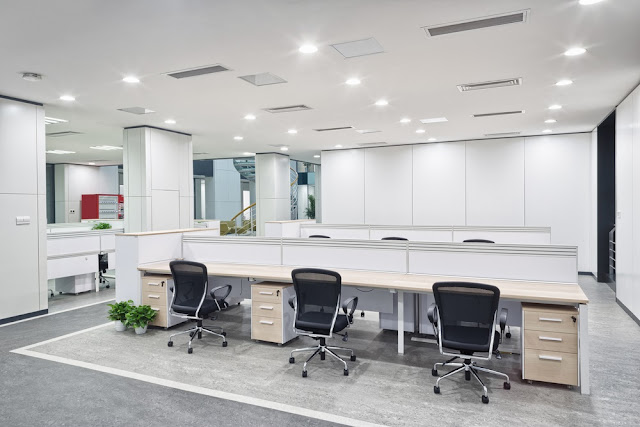 |
HOW TO IMPROVE YOUR COMPANY CULTURE?
These inventive design tips can come in quite handy for companies in the process of expanding their offices or remodeling their existing office interiors to include updated bye-laws and state of the art technology.
1. Maximising Natural Lighting : In the age of digital seclusion, and prolonged screen exposure, Natural lighting or day lighting is necessary to not only regulate workers’ circadian rhythms (allowing them to sleep better ) , but it also provides a much-needed boost of energy and that much-needed dose of vitamin D, which is elusive when workers’ are spending most of their daylight hours indoors.
The best office interior design firms look to maximise this factor, also in order to reduce energy costs on artificial lighting in the long run.
2. Areas that boost togetherness and collaboration: Organizations have been providing formal meeting spaces such as conference rooms designed to facilitate large groups of people and decision-making across the hierarchy for decades. According to research by the renowned office furniture company Knoll, there are 32 different kinds of collaborative spaces in modern offices, and the average office has about 7 of them. Effective group spaces promote diverse social interactions. Research suggests that organizations and office fit out companies need to provide the following kinds of collaborative spaces, adjusted to the scale of their organization:-
A. Spaces to support the most popular types of group work: Brainstorming, video conferencing and project team meetings.
B. Informal interaction areas that promote diversity and collaboration across the hierarchy regardless of roles.
C. Booth seating spaces to promote face-to-face interactions.
D. Training spaces to foster mentoring and learning.
3. Diagnosing the type of culture and designing for it: There are namely 4 types of organizational cultures that are predominant all over the globe.
A. Collaborate Culture
B. Create Culture
C. Control Culture
D. Compete Culture.
The corporate interiors of organizations with the aforementioned cultures differ immensely in their office fit-outs and spatial needs.
For example, an organization with a Collaborate culture will have more informal group spaces and a low ratio of individual to group space, whereas an organization with a Control culture will have more formal spaces and a high ratio of individual to group spaces. The design implications of these cultures are explained in detail in office furniture company Haworth’s white paper titled ‘How to create a successful organizational culture’.
The first step for organizations and office fit out companies when it comes to office remodeling or office interior construction is to identify the type of organizational culture and design accordingly.
4. Adding Colour:– Any modern office idea should include adding a dash of color to office interiors. Corporate interiors are notorious for being drab and bereft of color, and an organization’s culture can benefit from having a vibrant, colorful office, especially in the age of millennials.
Colors are known to impact moods and improve productivity. For example, warm colors like Red are known to stimulate creativity and foster optimism.
5. Integrating nature: Providing large windows, dedicated outdoor areas when possible, lots of plants, flowers, natural textures and even wallpapers with plant graphics as part of professional office decor can go a long way to boosting employee enthusiasm and eliminating the dread of being indoors all day.
Plants reduce stress and also improve indoor air quality.
6.Branding: The key to any corporate office’s culture is the brand of the organization. Office interiors should reflect the company’s identity by incorporating the color scheme associated with the company, placing wall art and graphics that are in line with the organization’s values and constructing history walls and installations that convey the organization’s achievements.
7.Interactive Screens: The best office interior design companies always integrate interactive TVs, touchscreens and tablets to showcase information about the organization not just to employees but also to any visitors to the workplace.
Screens showing the organization’s achievements, its goals, or even real-time data like the indoor air quality and temperature are a great way to improve employee awareness and contentment.
Comments
Post a Comment